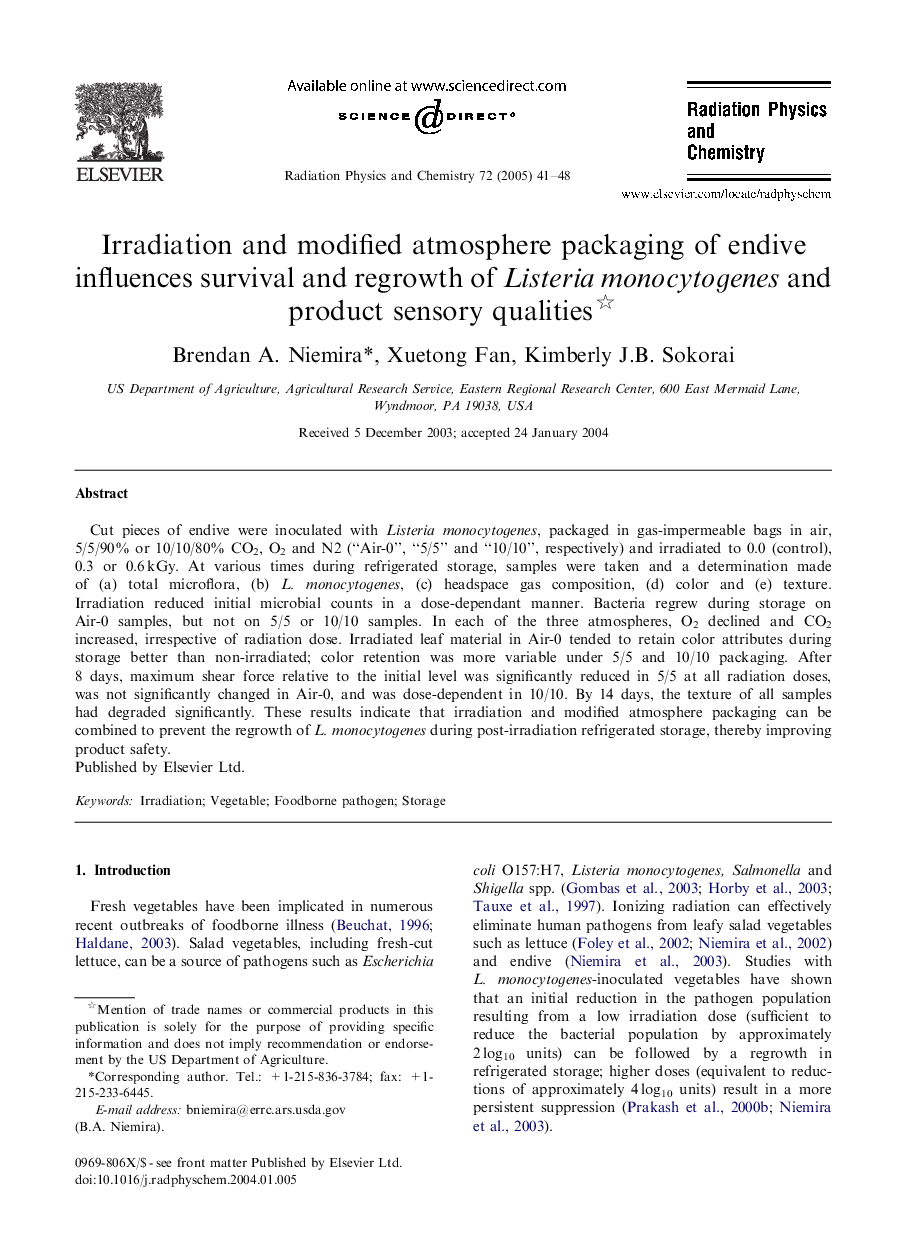| Article ID | Journal | Published Year | Pages | File Type |
|---|---|---|---|---|
| 10731609 | Radiation Physics and Chemistry | 2005 | 8 Pages |
Abstract
Cut pieces of endive were inoculated with Listeria monocytogenes, packaged in gas-impermeable bags in air, 5/5/90% or 10/10/80% CO2, O2 and N2 (“Air-0”, “5/5” and “10/10”, respectively) and irradiated to 0.0 (control), 0.3 or 0.6Â kGy. At various times during refrigerated storage, samples were taken and a determination made of (a) total microflora, (b) L. monocytogenes, (c) headspace gas composition, (d) color and (e) texture. Irradiation reduced initial microbial counts in a dose-dependant manner. Bacteria regrew during storage on Air-0 samples, but not on 5/5 or 10/10 samples. In each of the three atmospheres, O2 declined and CO2 increased, irrespective of radiation dose. Irradiated leaf material in Air-0 tended to retain color attributes during storage better than non-irradiated; color retention was more variable under 5/5 and 10/10 packaging. After 8 days, maximum shear force relative to the initial level was significantly reduced in 5/5 at all radiation doses, was not significantly changed in Air-0, and was dose-dependent in 10/10. By 14 days, the texture of all samples had degraded significantly. These results indicate that irradiation and modified atmosphere packaging can be combined to prevent the regrowth of L. monocytogenes during post-irradiation refrigerated storage, thereby improving product safety.
Related Topics
Physical Sciences and Engineering
Physics and Astronomy
Radiation
Authors
Brendan A. Niemira, Xuetong Fan, Kimberly J.B. Sokorai,
